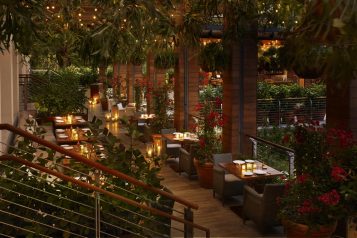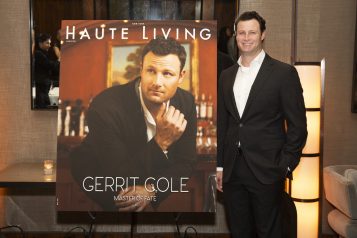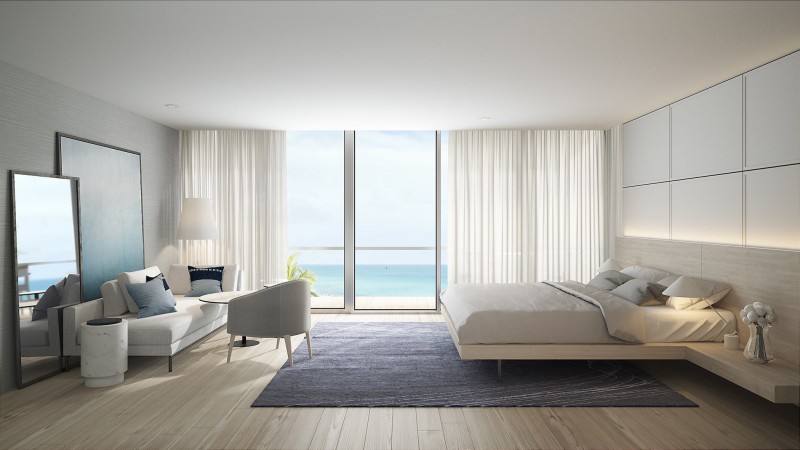
Photo Credit: Navigate
Navigate is an award-winning design studio that brings brands to life. To do it, they transform spaces into destinations, using a blend of passion and process they call Integrated Inspiration™ – a fresh take on design that aligns every facet of a project to express the soul of a brand. Combining the hands-on, collaborative approach of a boutique, with a limitless global reach, Navigate’s experienced team of creative technologists and designers create iconic aesthetics for hospitality, retail, and residential projects, from North America to the Middle East. Heading up the incredible design force is Ken Lam, co-founder and renowned interior designer, who can be credited for the brand’s clean, inspiring ethos. Over his career history, he’s won 25 industry awards from ARIDO, IIDA Retail and RDI International, to A.R.E. Chair Store Age and Asia’s Ring Awards. He’s worked with world-renowned brands like Marriot Hotels, Trump Hotels, Sears, Oliver & Bonacini and the Air Canada Centre. Here, Haute Living sits down with Lam to discuss his newest project—the gorgeous Celino in Miami Beach—as well as some of the brand’s most distinguished works in Toronto, design trends and the future of Navigate.
Tell us about your design portfolio in Toronto. What are some of the highlights?
We have been busy in the past 15 months, focusing a lot more on the local market. Some projects we opened includes Demetre (an iconic dessert restaurant), Nando’s Chicken, Mira (Peruvian concept), Fresh Restaurants (two locations), Atoi and COC (Coffee Oyster Champagne), Thirty Six Knots (a lifestyle store), two hotel lobby bars at the Fairmont Hotels, and a dozen Sweet Jesus Ice-cream concepts, just to name a few. We have had the privilege to work with some really forward-thinking restaurateurs, which allows all of us to create, invent, collaborate and succeed.
How would you describe your aesthetic?
There is no such thing as the “Navigate” Look. We are brand-forward experiential designers. In fact, we take time to develop deep understandings of the client’s brand before we design and create an experience that best represents the brand.
Customers who go to our restaurants will discover our focus is on the journey even before from the moment they walk in. We love to use colors, layers of textures and artwork that are interwoven into the space to elevate the dining experience and set the stage for the beautiful food from the kitchen and cocktails from the bar. We love to design in a way that the space unfolds and tells a story as you go deeper. We design holistically, tackling the five senses throughout the entire dining experience. We love art, graphics and really cool lighting. It could be a minimalist concrete-wall Japanese bar (Narami) paired with an oversize kimono-tattoo graphics and a double ring red neon on the ceiling; or a fully stylized modern saloon (Weslodge Dubai) with 150 pieces of Victorian art and taxidermy. The spectrum is very wide what we can do, but the focus is still on brand experience, not solely on aesthetics.
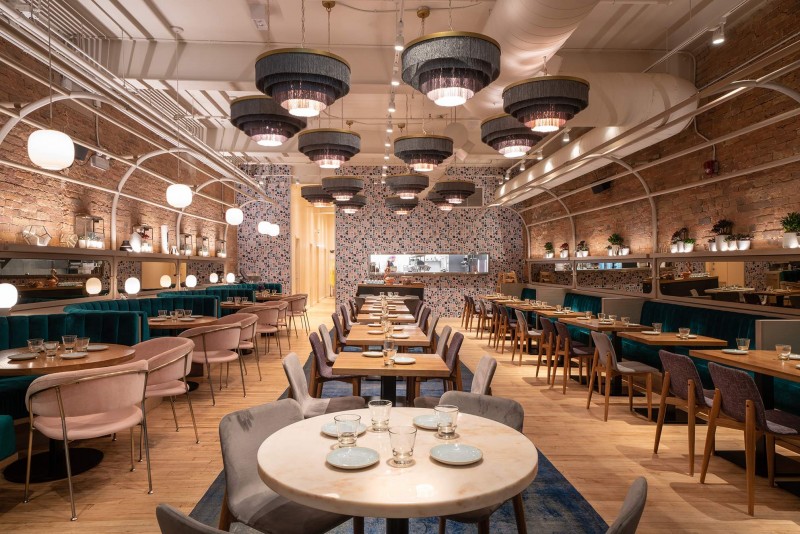
Photo Credit: Navigate
How do your design elements change between hospitality and restaurant projects?
For hotel projects, the focus is to keep the customer in the hotel rather than going elsewhere. Keeping that top of mind, the design needs to create different zones and areas for different functional need and ambiance. For example, a hotel lobby bar needs to be lively, cozy and airy creating the morning-riser buzz and the late-night cocktail vibe, whereas a mezzanine library room provides a private and intimate co-work space to lay back with your Macbook and a personalized macchiato. Most hotel restaurants have to cater to three meals, so transforming from buffet breakfast to a-la-carte, lunch/dinner will be key, through flexible fixtures and creative lighting solutions. The kitchen capacity will also need to accommodate room service. In terms of design elements, we can be as adventurous as the hotel will allow us to be, without hurting their brand and overall experience. Nowadays, a lot of trendy hotel restaurants are celebrity-chef endorsed, so incorporating their brand will also need to be considered.
For other restaurant projects, the focus is more short-term stay, with a memorable experience for the customer to return. The sky is the limit for design, really, however, recently there’s an emphasis on social-media ready design.
What are some trends that are particularly hot within the interior design industry right now?
Design-trends: A more sophisticated palette, Scandinavian style furniture, curves and terrazzo.
Restaurant trends: Collaboration, Food Halls, Clever store-front/entry, Secret bar (second floor, basement, hidden), Patios, UberEats-ready, Easter eggs (Hidden messages) and surprises.
Tell us about some of the unique design elements of The Celino.
Celino is a true marriage of rich history and modernism. What’s unique about the property is the drastic transformation from the iconic Art Deco staple (Park Central Hotel), which appears in almost every tourist postcard of Miami or old movies, to the completely color-filled and upscale modern hotel interior. With the erection of 620 Ocean Drive and the ultra-modern six-stories addition to the mix, the juxtaposition is even more prominent and unique. There are restrictions with what can be done due to the heritage of the property—for example, the pink and mint terrazzo flooring—but that’s the beauty of the design. By injecting new layout, colors and large-scale features, it is a completely new and vibrant experience with traces from the past that is nostalgic, yet unfamiliar. The main lobby now opens into the hotel featuring an indoor/outdoor bar with a full-service restaurant, creating energy the moment you step in. A massive multi-tiered terrace and swimming pool are introduced between the historical building with lush greens and eclectic furniture, drawing attention all the way to the front of Ocean Drive. The second restaurant rests in the new 620 building, with an atrium lobby looking up a six-story-high transparent rooftop pool.
The rooms are completely redesigned to a contemporary aesthetic, with soft pastel palettes and light wood as a general theme. All case goods and area rugs are custom designed and curated from different parts of the world. In contrast to the vibrant public spaces, the rooms provide a relaxed and peaceful environment to zen out and wind down.
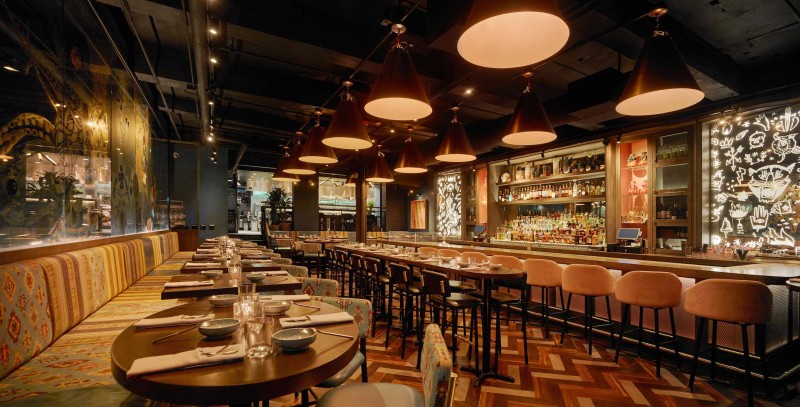
Photo Credit: Navigate
What made you bring your brand to Miami?
With our unique approach to hospitality and restaurants and our underlying passion for food, drinks and travels, we feel there is strong synergy between our core culture and the Miami hospitality scene. We’d love to be part of the vibrant city that is globally celebrated. We are a perfect match!
Where will Navigate be growing and expanding into the future?
We will continue to grow in the Canadian market since we are based in Toronto, but we have been venturing into New York throughout the past year. With Celino being one of our proudest pieces of work, Miami will definitely be on the map for our future growth!













